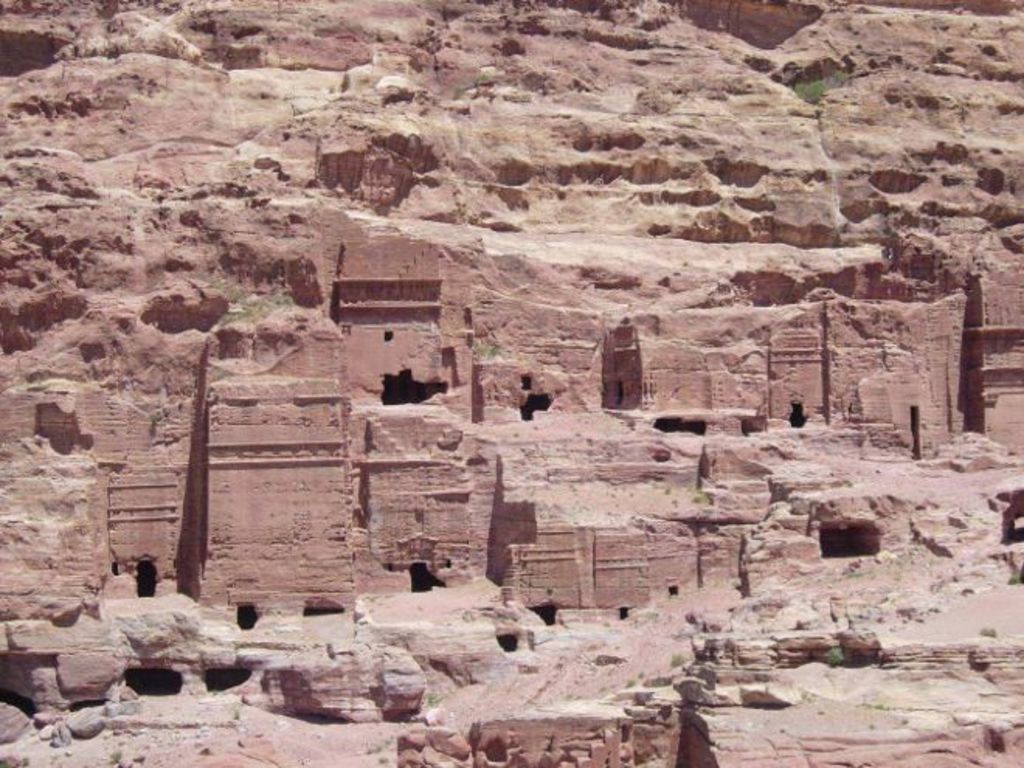Outline of the International Khubta Tombs Project
The „International Khubtha Tombs Project“ (IKTP) involves the clearance and excavation of Brünnow – Domaszewski Tombs 779 and 781 on the western flank of el-Khubtha at Petra. This part of el-Khubtha is well-known for its high concentration of some of the largest and most elaborate of the façade tombs, including the Urn Tomb, the Corinthian Tomb, the Palace Tomb, the Tomb of Unaishu and a large number of Hegr and Double Pylon tombs, which are the most complex types among the non-classical façade tombs. This necropolis lines the Wadi Musa as one exits the Siq and proceeds north, and has excellent visibility from the city centre and the Theatre area.
Tombs 779 and 781 are located on a terrace to the south of the Urn Tomb and almost opposite the Theatre. They appear to form a complex with Tomb 780, which lies between them, yet this tomb is unfinished and therefore was not the focus of any detailed work in the first season of this project. Tombs 779 and 781 were chosen for clearance and excavation since they both have interior chambers notable for their size, tooling, arcosolia burials and decorative elements, and large platforms in front of their façades with traces of accompanying structures. Furthermore, Tomb 779 has a façade of the Double Pylon type, while Tomb 781 is a Hegr tomb meaning that any datable material excavated from the tombs could throw interesting light on the relative chronology of the different façade types at Petra.
The clearance and excavation of Tombs 779 and 781 have the following objectives:
- To shed light on the form of burials and funerary structures carved into the bedrock (since many of the tombs at Petra have uncleared floors and exterior platforms)
- To seek material that could date the burials and use of the tombs
- To establish the relationship between the interior and exterior parts of the tombs
- To determine the sorts of structures that are typically found outside the tombs (forming funerary complexes)
- To enhance knowledge of Nabataean rock-cut architecture
- To enrich the visitor’s experience of Petra’s rock-cut monuments (seeing as these two tombs have some of the finest carved and decorated burial chambers at Petra)

